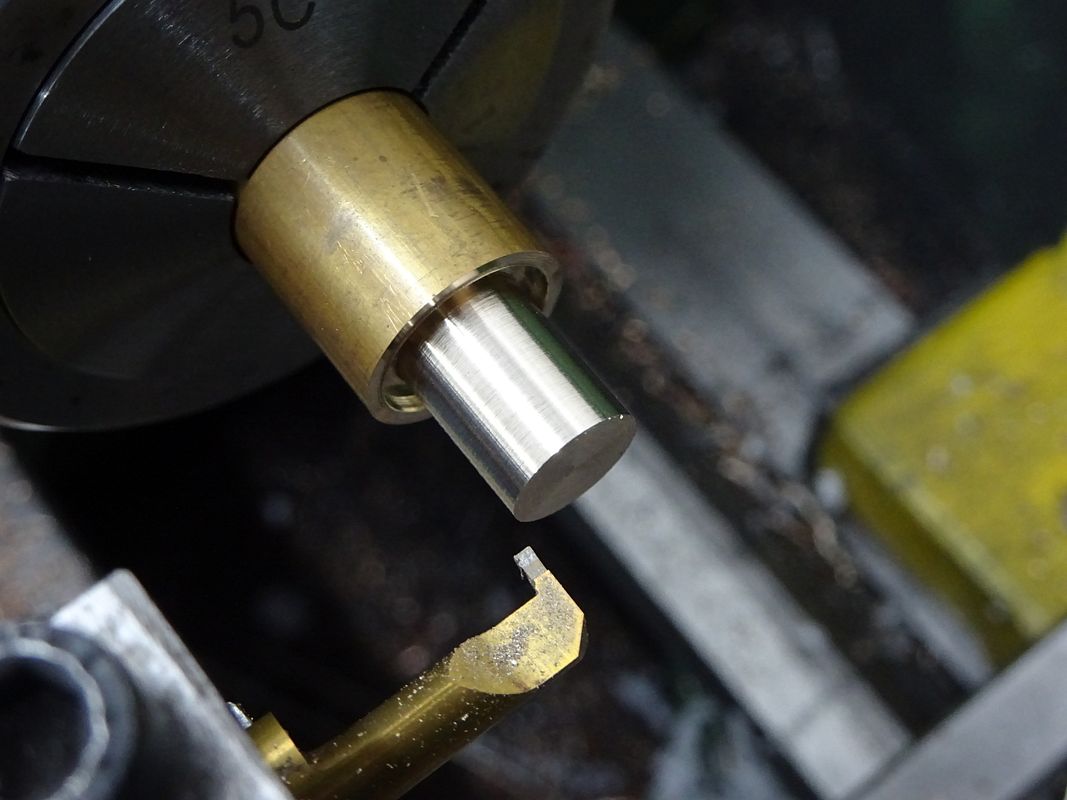There is a supplier here in the U.S. that manufactures T-15 HSS inserts that work beautifully for aluminum and steel on a 7" x 12"/14"/16" mini-lathe:
Standard and Specialty Inserts
When the inserts get dull, they can easily be sharpened by rubbing them upside-down on an oil stone. They also offer high quality holders:
Tool Kits
You will still want to have HSS blanks so you can grind special tool bits if the need arises, but their #8 3/8" kit will take care of 90% of your needs:
Kit #8 3/8 inch Turning (C) Right Hand Left Hand and Boring Bar

Standard and Specialty Inserts
When the inserts get dull, they can easily be sharpened by rubbing them upside-down on an oil stone. They also offer high quality holders:
Tool Kits
You will still want to have HSS blanks so you can grind special tool bits if the need arises, but their #8 3/8" kit will take care of 90% of your needs:
Kit #8 3/8 inch Turning (C) Right Hand Left Hand and Boring Bar

I've got a tu2004v lathe inbound (they're on backorder) and it's my first lathe. I'm a hobbyist and not a trained machinist so I've never been educated in any of this stuff. I suppose you could say I'm somewhat of a stereotypical newbie having sat through a ton of you tube videos trying to learn all I can. I do however have a lot of grey in my beard and a shed full of tools that do get used so to my credit I'm smart enough to have not killed myself doing something stupid using them. I would like to continue that pattern
Following that stereotypical newbie process I've bought one of the typical carbide insert tooling sets that you get from the usual chinese import sites.(And for those that always choose to chime in about HSS I have some of that also and will grind it up when I get to it).
Back to the carbide inserts though, I'm genuinely surprised at how blunt most of the inserts are. I can easily push my finger onto the cutting edge without cutting myself. Except for the threading inserts and the grooving tool which do feel a bit sharp.
My past experience tells me that blunt tools can dangerous tools so I want to make sure that this is normal before I try and turn some steel with them and potentially do some damage.
I do understand that different materials require different insert types/grades/sharpness. I have a small cnc and all the milling cutters i have for it (even the carbide ones) are extremely sharp.
From the CNC I know that Aluminum, plastic and wood need sharp cutters and from drilling I know that steel likes sharp drill bits but maybe that's a HSS drilling thing only. I've never drilled steel with a carbide.
So are these cutter inserts meant to be sharp (drill bit sharp) or is the rounded looking top of the cutting edge actually normal? Am I worrying over nothing?
I know straight up that I wouldn't go near aluminum with these. Plastic I expect will be safe to try it on because failure there won't damage anything other than the plastic. I expect that blunt inserts on steel are probably just going to chatter and/or screech loudly, like trying to drill with a blunt drill bit or a drill on reverse.
If there's anything I think that the typical youtubers who have machinist backgrounds and training leave it's it's the really simple stuff like the answers to questions like these




































































